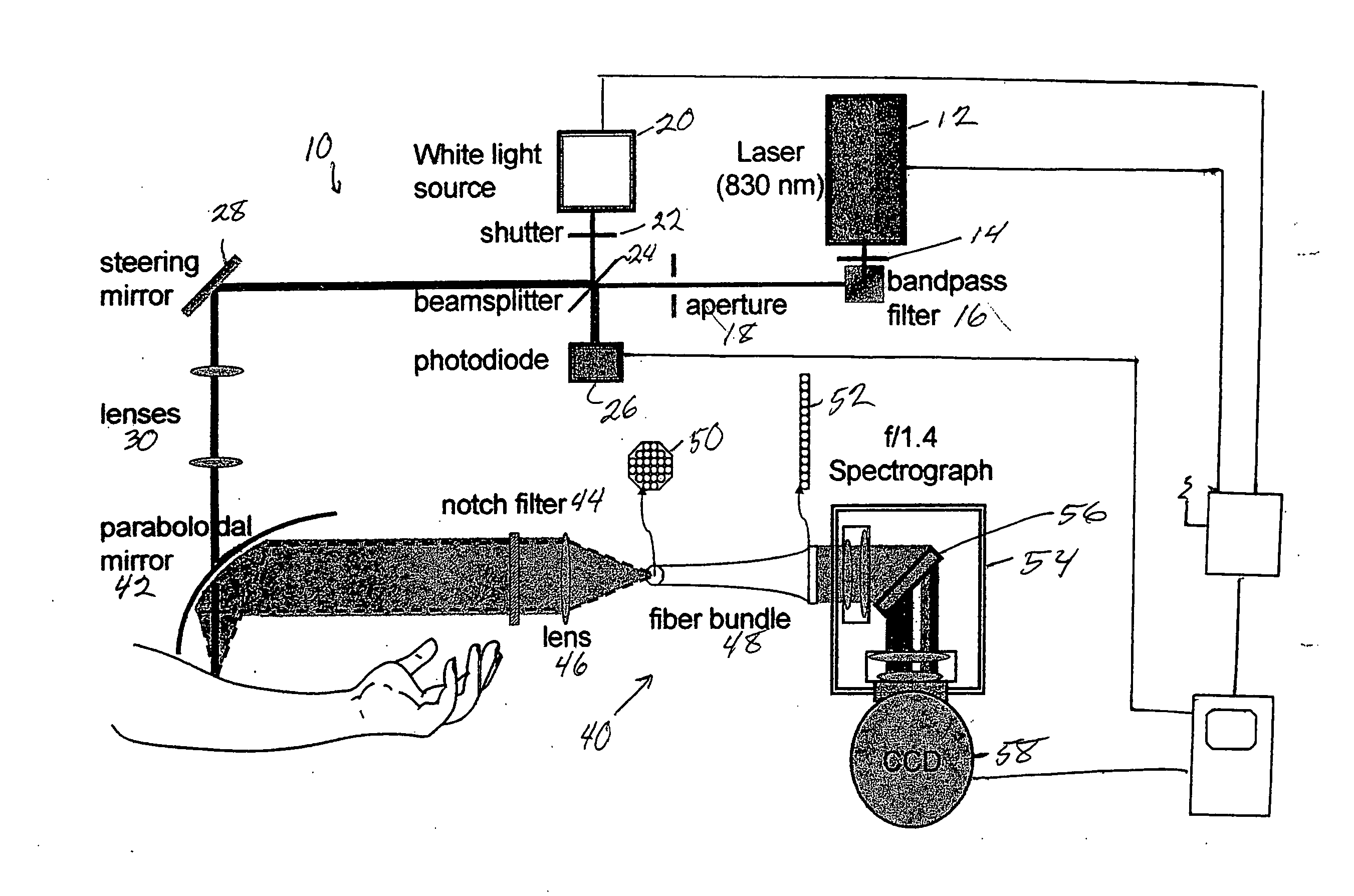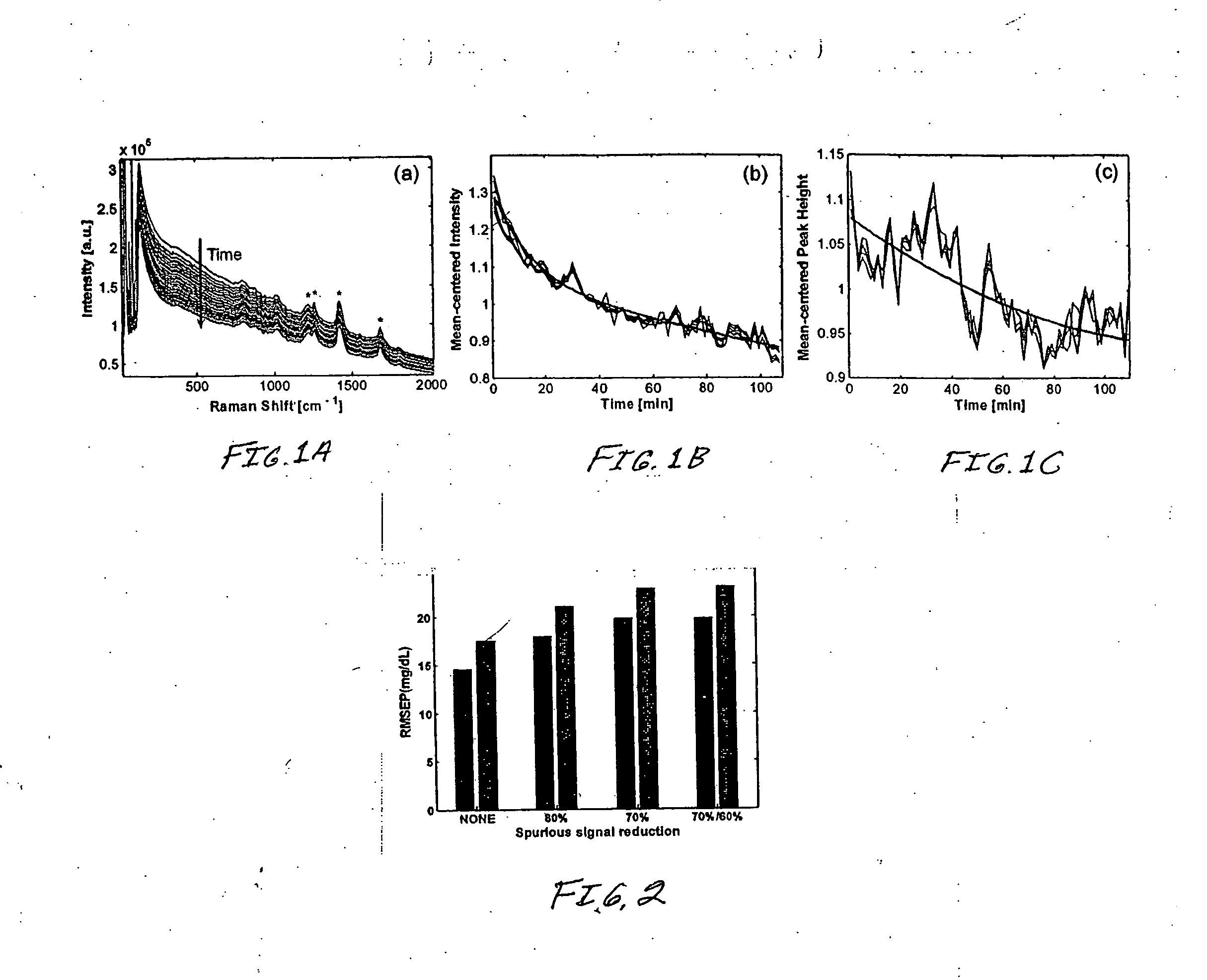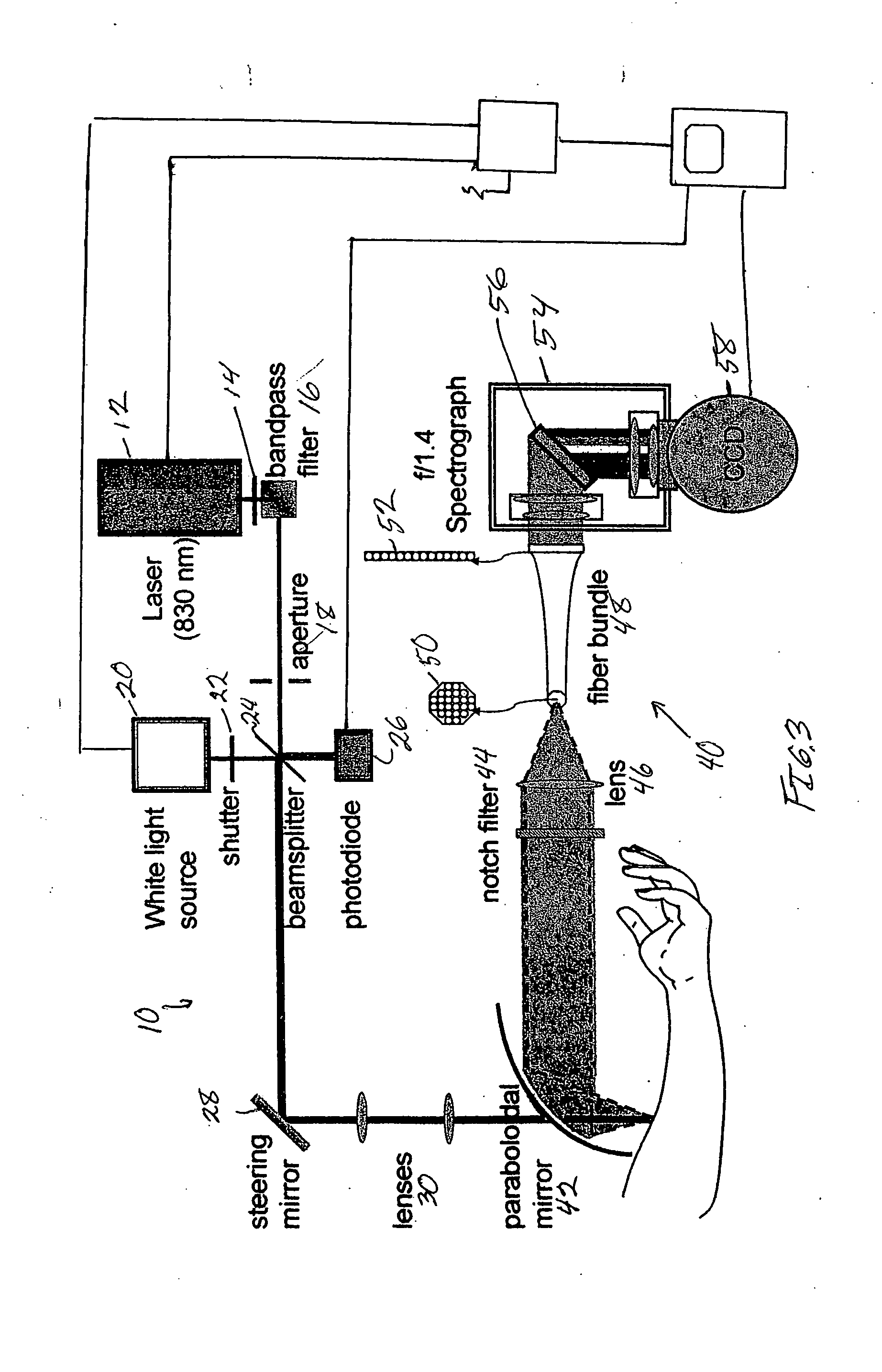Intrinsic Raman spectroscopy
- Summary
- Abstract
- Description
- Claims
- Application Information
AI Technical Summary
Benefits of technology
Problems solved by technology
Method used
Image
Examples
Embodiment Construction
[0042] Preferred embodiments of the present invention relate to the use of Raman spectroscopy for the measurement of blood analytes. Systems and methods used in conjunction with preferred embodiments include those described in U.S. Pat. No. 5,615,673 and in U.S. Applications PCT / US96 / 04136, 60 / 675,252 filed on Apr. 27, 2005, 60 / 701,839 filed on Jul. 22, 2005, 60 / 702,248 filed on Jul. 25, 2005, and Ser. No. 11 / 412,418 filed Apr. 27, 2006 this patent and these applications being incorporated by reference into the present application in their entirety.
[0043]FIG. 1 depicts the signal obtained from a human forearm as observed with a commercial Kaiser PHAT probe Raman system with 785 nm excitation. The background signal, after spectral correction for the combined response of the grating and the CCD. Each trace is obtained with a 1.5 minute collection time and the overall signal level is seen to decrease over the course of the nearly 2 hour measurement. The intensity decays across the spe...
PUM
 Login to View More
Login to View More Abstract
Description
Claims
Application Information
 Login to View More
Login to View More - R&D
- Intellectual Property
- Life Sciences
- Materials
- Tech Scout
- Unparalleled Data Quality
- Higher Quality Content
- 60% Fewer Hallucinations
Browse by: Latest US Patents, China's latest patents, Technical Efficacy Thesaurus, Application Domain, Technology Topic, Popular Technical Reports.
© 2025 PatSnap. All rights reserved.Legal|Privacy policy|Modern Slavery Act Transparency Statement|Sitemap|About US| Contact US: help@patsnap.com



